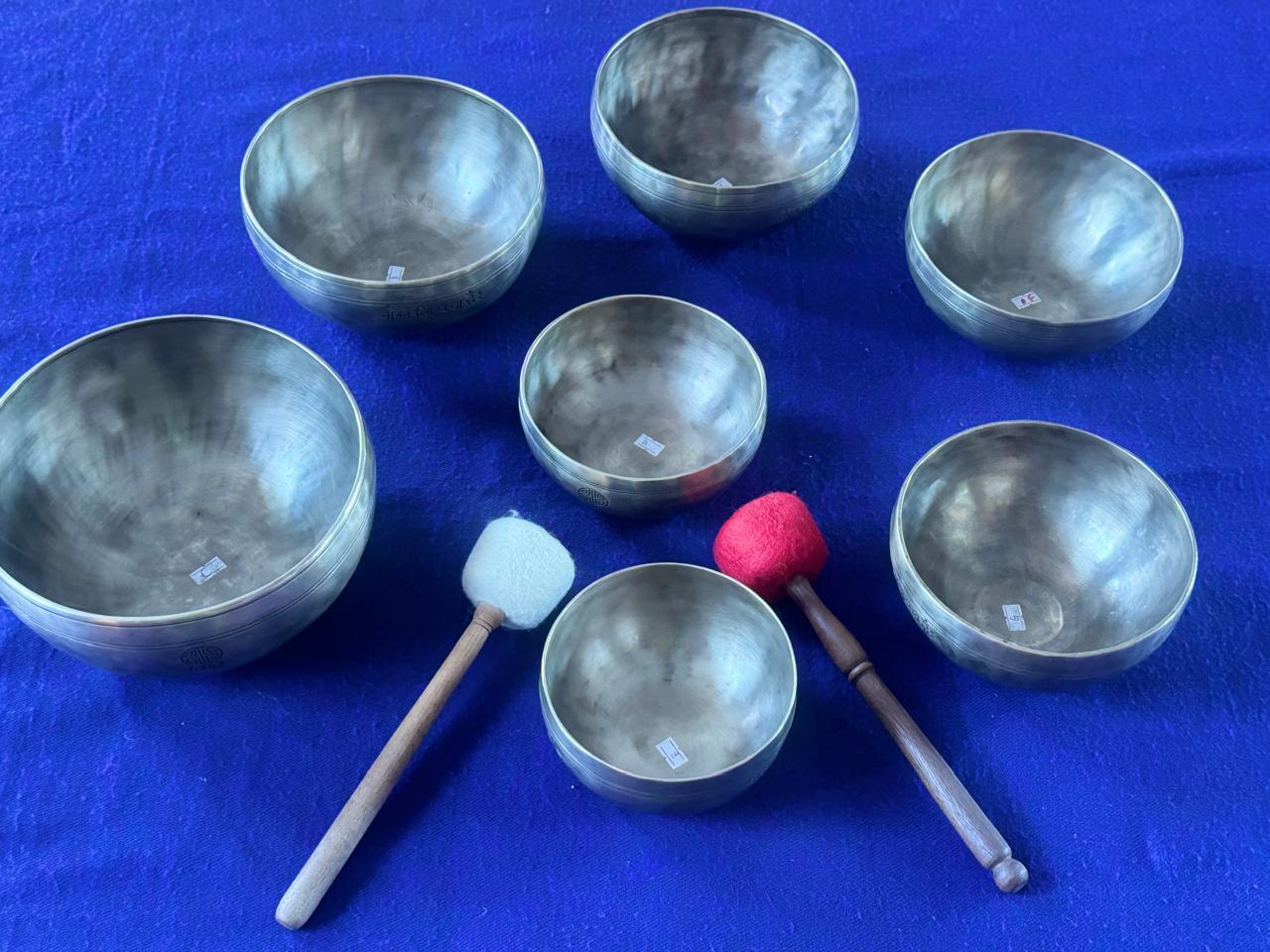
Course Overview
Historical Context
Ancient Practices: Sound healing has been used for centuries across various cultures. For example, ancient Greeks used music as a form of therapy, while Tibetan monks employed singing bowls in spiritual practices. Modern Developments: In recent decades, sound healing has gained popularity as part of holistic wellness practices, integrating modern scientific understanding of sound frequencies and vibrations.
Understanding Sound and Its Effects
Physics of Sound: Delving into how sound is produced, transmitted, and perceived. This includes understanding pitch, tone, and the emotional responses they evoke. Brainwave States: Exploring how different sound frequencies can influence brainwave patterns, promoting states such as relaxation (alpha waves) or deep meditation (theta waves).
Exploration of Instruments
Tibetan Singing Bowls: Crafted from a mix of metals, these bowls produce rich tones that resonate deeply, ideal for meditation and relaxation. Crystal Singing Bowls: Made from pure quartz crystal, these bowls aim to amplify healing energies and are often used in chakra balancing. Gongs: Known for their powerful sound waves, gongs create a deep vibrational experience that can help release emotional blockages. Tuning Forks: Used for targeted sound therapy, tuning forks can balance energy in specific areas of the body. Drumming: Rhythmic drumming is also a form of sound healing that can facilitate deep meditative states and community connection.
Techniques for Sound Healing
Guided Sound Journeys: Leading participants through a sound experience that may include visualization, breathwork, and intention-setting. Creating a Sound Bath: Learning how to set up a sound bath session, including how to choose instruments, create a calming environment, and guide participants through the experience. Personalized Sound Healing: Techniques for tailoring sound healing sessions to meet individual needs based on specific emotional or physical issues.
Therapeutic Benefits
Stress Reduction: Sound healing can lower cortisol levels, leading to reduced stress and anxiety. Pain Management: Certain frequencies can help diminish pain perception and enhance relaxation, making sound therapy a complementary approach to traditional pain management. Emotional Healing: Using sound to release trapped emotions can lead to profound shifts in mental and emotional health.